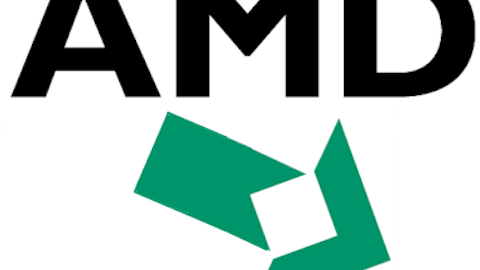Intel Corporation (NASDAQ:INTC) has, in the past quarter, failed to stir a bullish vibe among investors. Its earnings, released in January, paint a darker shade of gloom for the chip maker which has, for the past year, suffered amid shrinking PC sales. In an attempt to regain footing and boost investor confidence, Intel has decided to take a chance on the budget smartphone market.
Introducing the Yolo smartphone. Currently selling in Kenya, this smartphone has managed to create a unique selling point for itself. In addition to an affordable $125 price, the phone runs on the widely popular android operating system. From my point of view, this is a huge plus. Most consumers in budget markets are more familiar with the android operating system than they are with any other operating system. Yolo, which is an acronym for you live only once, is sold by Safaricom, the biggest carrier in the country with an estimated 65 percent market share. Given these dynamics, this smartphone is very likely to be a success in the market.

For Intel to realize its true value and set growth in the right direction, it needs to find a formula that can cushion it from shrinking PC sales, while at the same time enhance its presence in the mobile market. The Yolo smartphone, despite being low-end, is a good start.
Mobile market is the most viable play
A lot of different insights have been given regarding Intel’s next move. From where I stand, I believe that the most viable play at the moment is the mobile market. Comparing Intel with its core competitors, it comes of note that its competitors have bigger footprints in mobile. This perhaps explains the sheer disparity in financial performance during the past quarter.
Going by earnings, ARM Holdings plc (NASDAQ:ARMH) managed to trounce Intel in an unforgiving fashion. Unlike Intel, which saw a 27 percent dip in Q4 earnings, ARM managed to grow its earnings for the quarter by 18 percent. Similarly, ARM’s top line increased 25 percent; an impressive achievement compared with Intel’s 3 percent revenue dip during the quarter. In fact, ARM’s profit and growth have exhibited double digit growth for three years straight.
What does ARM have that Intel does not? A commendable footing in mobile.
Owing to its huge footprint in mobile, ARM managed to deliver better-than-expected quarterly results. According to the semi-conductor heavyweight’s website, its semiconductor designs span across close to 95 percent of the smartphone market. I believe the jury is still out on the accuracy of these self proclaimed figures. Nonetheless, these numbers, accurate or not, paint a picture of ARM’s dominance.
Gartner believes that unit growth for tablets in 2013 will come in at 39 percent and smartphones 33 percent. If these figures are to believed, ARM’s prospects couldn’t get any better.
Moving over to QUALCOMM, Inc. (NASDAQ:QCOM), it becomes more apparent that a bigger presence in mobile translates to better earnings. Just like ARM Holdings, Qualcomm also managed to perform impressively during the past quarter. Its revenue edged up 29 percent, while its chip revenue increased 34 percent.
Qualcomm’s dominant IP in CDMA and LTE similarly presents good prospects. It gives the chip maker a huge edge in a market where data capabilities have become a unique selling point for carriers and device makers alike.
The chart offers deeper insight on how smartphones and tablets are gaining more relevance relative to PCs.

As shown, demand for smartphones outstripped that of PCs in late 2010. Going by the trend, the crossing point between tablets and PCs is imminent. The bottom line is that PCs will lag tablets somewhere in 2013, perhaps even in the next quarter.
PC is dead; just look at Dell Inc. (NASDAQ:DELL)
Frankly speaking, the PC is dead. PC fanatics may label me a naysayer or thwarter for that matter, but the reality will soon dawn; the PC market no longer presents favorable prospects.
Just look at Dell. The PC maker has been looking to go private and if recent reports are to believed, already has. Other PC players like Hewlett Packard are neck-deep in bearishness and the only direction that they seem to be heading is south.
I believe that Intel needs to penetrate mobile as soon as it can. The Yolo initiative in Kenya should just be the onset of a new approach to business
In conclusion, I am of the opinion that Intel’s current technology outstrips market requirements. In my view, this demonstrates the great potential in the chip maker. This high potential, coupled with the market’s low expectations and the current low share price, presents a good entry point into the stock. If Intel manages to fully filter through the smartphone and tablet segment, it will definitely reverse its fortunes and give shareholders a good return on their investment. Intel is a good buy.
The article Intel Fancies its Chances in the Budget Smartphone Market originally appeared on Fool.com and is written by Lennox Yieke.
Copyright © 1995 – 2013 The Motley Fool, LLC. All rights reserved. The Motley Fool has a disclosure policy.





